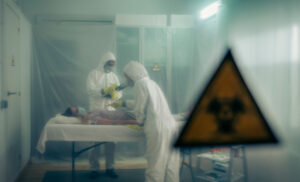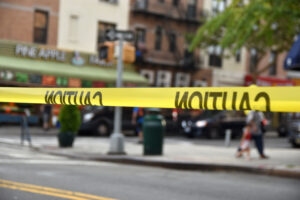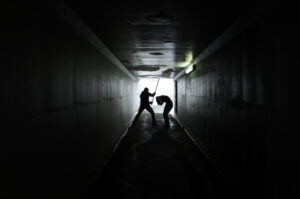An earthquake of magnitude 7.1 struck western Ventura, including Santa Barbara. Extensive damage was done to the lightly-constructed Catholic missions in and around Santa Barbara.
On December 21, 1812, one of the largest earthquakes in Californian history struck the western part of Ventura, including Santa Barbara. It had a magnitude of 7.1 and its epicenter was offshore, probable in the Santa Barbara Channel. Extensive destruction occurred in the lightly constructed buildings of the various Catholic missions. Three missions suffered the greatest damage—Santa Ynez, Santa Barbara, and Purisima. The experiences of Santa Ynez were typical of all three. One of the new homes next to the church was torn down and the upper interior walls along with the tiles on the roofs of all the adjacent houses were knocked down. Reports of a tsunami were persistent despite the rarity of such in the history of Californian earthquakes. Liquefaction was widespread along the coast. The effect of so much damage persuaded the Catholic authorities to remove most of their stations from the coastal areas to places farther inland.
The reports of sea waves were extensive, the only descriptions possible at that time for what we now call tsunamis, and it is highly likely that they occurred despite the absence of any reports of deaths from them. A Spanish ship at anchor thirty-eight miles offshore was substantially damaged at the time of the earthquake. People living at the Rancheria Mission where damage was minimal decided to move half a mile away from the coast because the waves threatened to flood them since they had already flooded two areas of Santa Barbara. At the Santa Barbara Presidio there were reports of the sea having changed its natural condition because the whole mission appeared to settle, presumably a reference to the land sinking because everyone ran away for fear of being engulfed by the sea. Another of the many scattered reports that were later recovered from the local archives told of an earthquake so violent that the sea receded and then rose up like a mountain. This account bears the marks of authenticity because it is exactly what would have happened, as we know from our present knowledge of plate tectonics, if indeed a tsunami had accompanied the earthquake.
An earthquake of magnitude 6.9 hit this same area thirteen days earlier but the epicenter was in a very different location, one hundred miles east of Santa Barbara, at Wrightwood, near the San Andreas Fault. This earthquake affected a wide area, reaching westward to damage some of the same places that were destroyed by the later one. It destroyed the church at Mission Santa Barbara, and caused major damage at Mission La Purisma Concepcion, near present-day Lompoc, causing that site to be abandoned, and a new Mission Purisma to be built several miles farther north. This earlier earthquake is often referred to as the San Juan Capistrano earthquake because it was responsible for the death of forty Native Americans who were attending mass at Mission San Juan Capistrano when the earthquake struck. The mortar in the church walls failed and the church collapsed. It had been poorly constructed. Damage was also reported at Mission San Gabriel and even as far away as San Diego and San Fernando.
Most of the overall damage was due to the December 21 quake but often, because both quakes sometimes hit the same place, we get explanations like the following of the additional damage done to a place that had already been hit by the December 8 quake. The damage at Mission La Purisima Concepcion on December 21 was extraordinary and horrifying. The earthquake completely ruined the church. It destroyed several statues and paintings, and ruined most of the art work. The ecclesiastical vestments were not damaged since they were in drawers. Some of the buildings were flattened to the ground while others may have been usable after repairs. The possessions and furnishings of the mission also suffered. Some were smashed, others broken, and all were damaged. The inclement weather with its copious rain did not allow people time to dig out or to repair roofs. The original mission was on the edge of a marsh and on sloping ground, which probably contributed to the extensive damage.






















